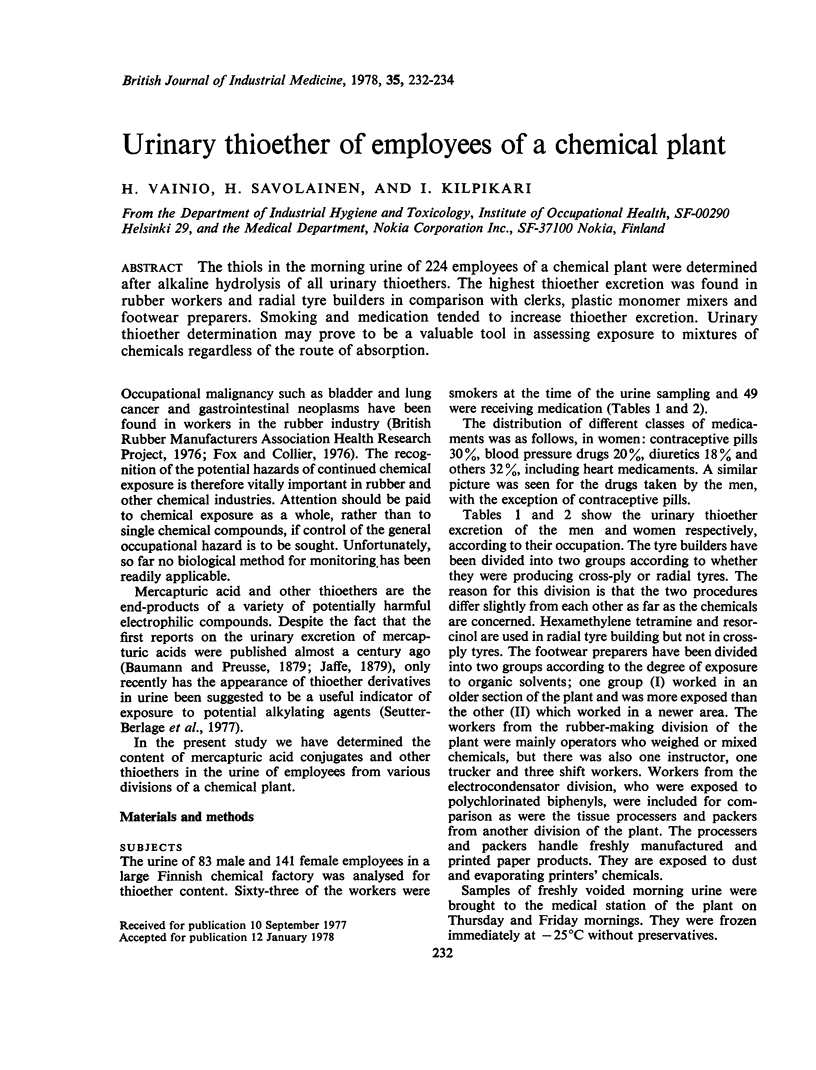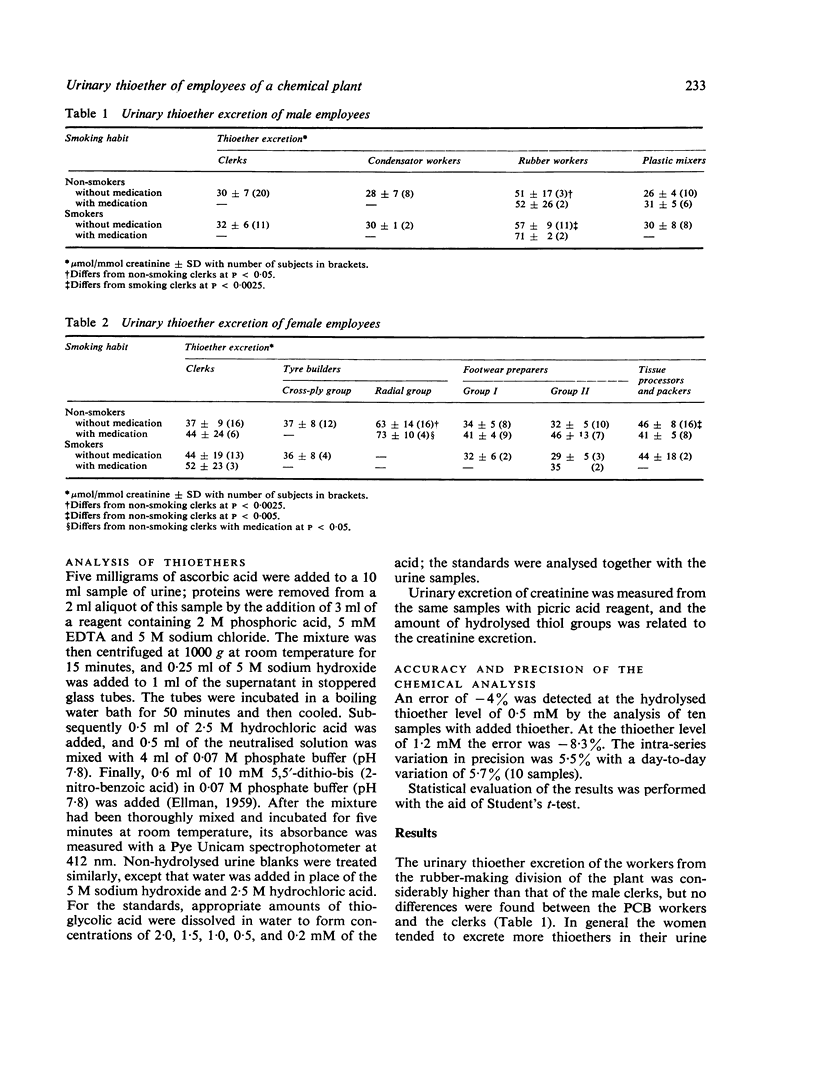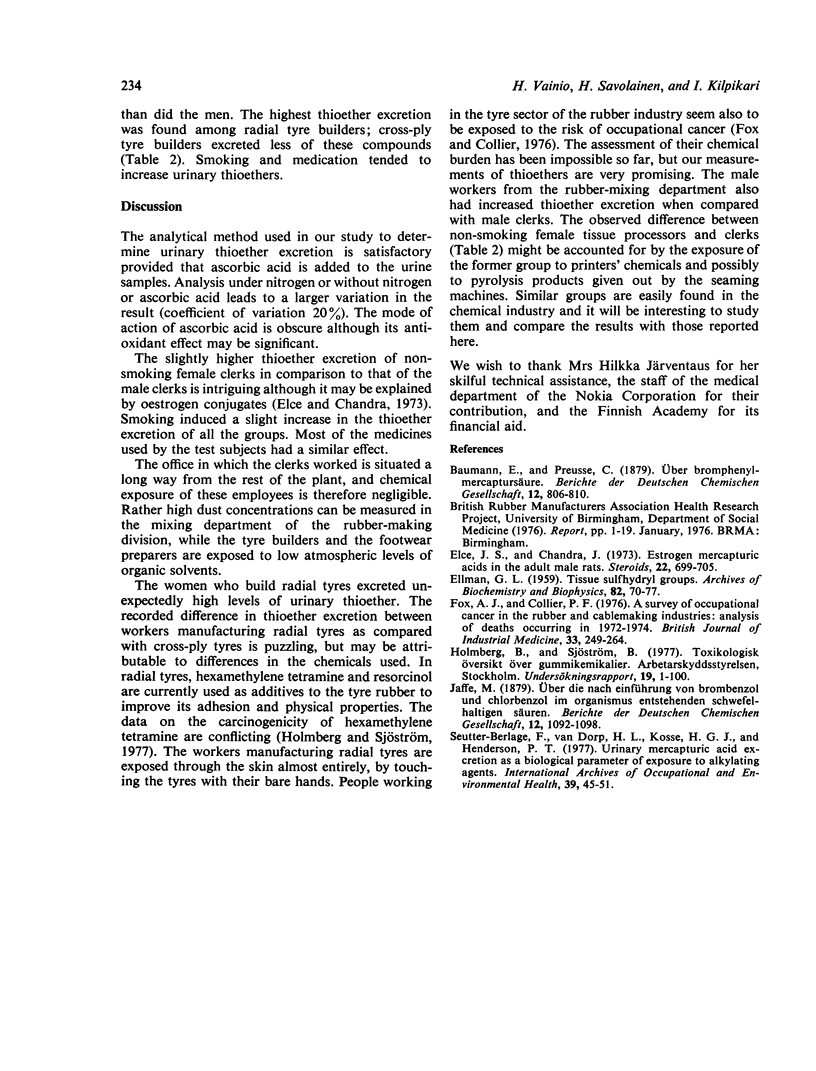Abstract
The thiols in the morning urine of 224 employees of a chemical plant were determined after alkaline hydrolysis of all urinary thioethers. The highest thioether excretion was found in rubber workers and radial tyre builders in comparison with clerks, plastic monomer mixers and footwear preparers. Smoking and medication tended to increase thioether excretion. Urinary thioether determination may prove to be a valuable tool in assessing exposure to mixtures of chemicals regardless of the route of absorption.
Full text
PDF


Selected References
These references are in PubMed. This may not be the complete list of references from this article.
- ELLMAN G. L. Tissue sulfhydryl groups. Arch Biochem Biophys. 1959 May;82(1):70–77. doi: 10.1016/0003-9861(59)90090-6. [DOI] [PubMed] [Google Scholar]
- Elce J. S., Chandra J. Estrogen mercapturic acids in the adult male rat. Steroids. 1973 Nov;22(5):699–705. doi: 10.1016/0039-128x(73)90117-7. [DOI] [PubMed] [Google Scholar]
- Fox A. J., Collier P. F. A survey of occupational cancer in the rubber and cablemaking industries: analysis of deaths occurring in 1972-74. Br J Ind Med. 1976 Nov;33(4):249–264. doi: 10.1136/oem.33.4.249. [DOI] [PMC free article] [PubMed] [Google Scholar]
- Seutter-Berlage F., van Dorp H. L., Kosse H. G., Henderson P. T. Urinary mercapturic acid excretion as a biological parameter of exposure to alkylating agents. Int Arch Occup Environ Health. 1977 Apr 15;39(1):45–51. doi: 10.1007/BF00381551. [DOI] [PubMed] [Google Scholar]


